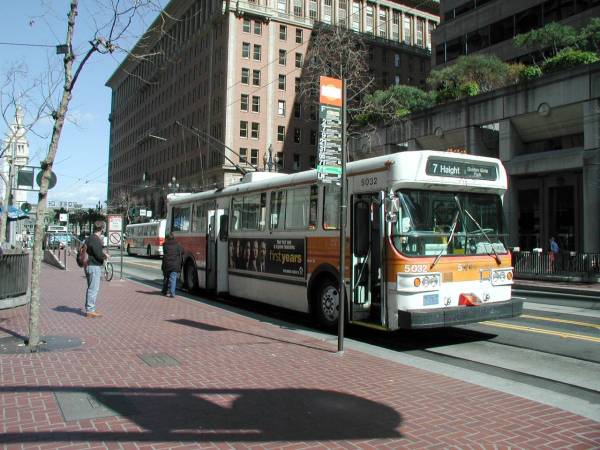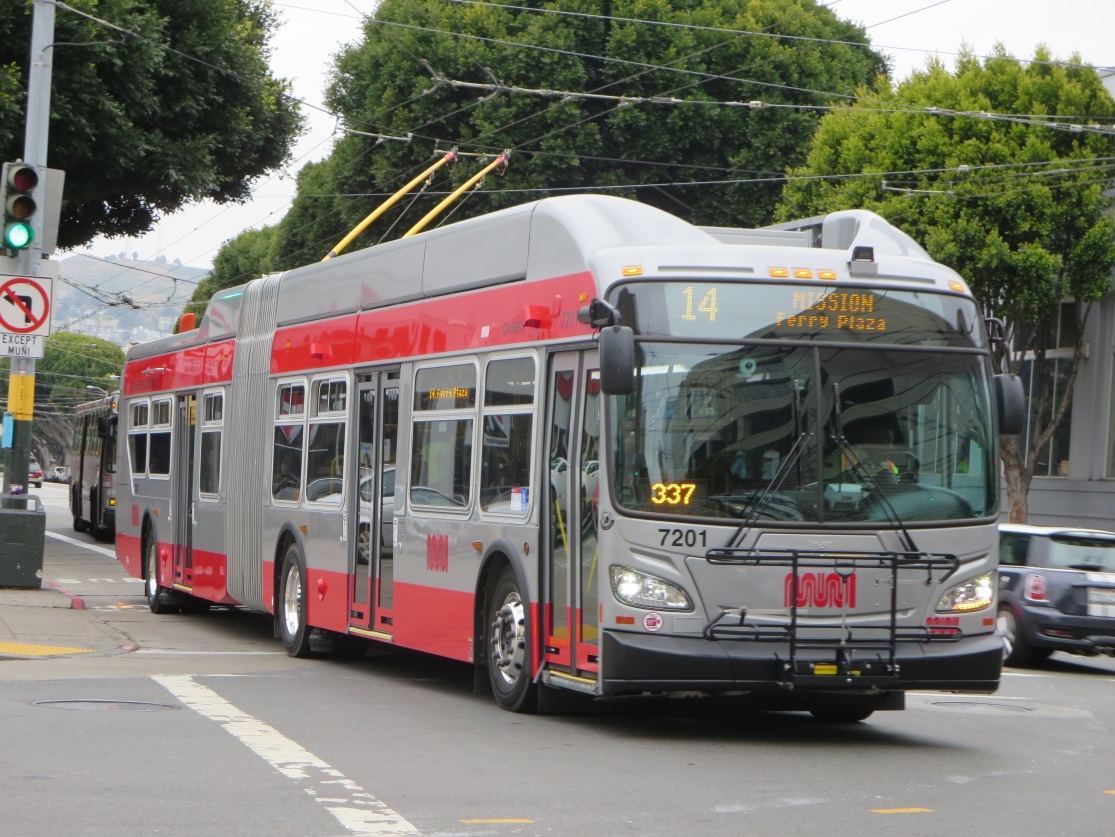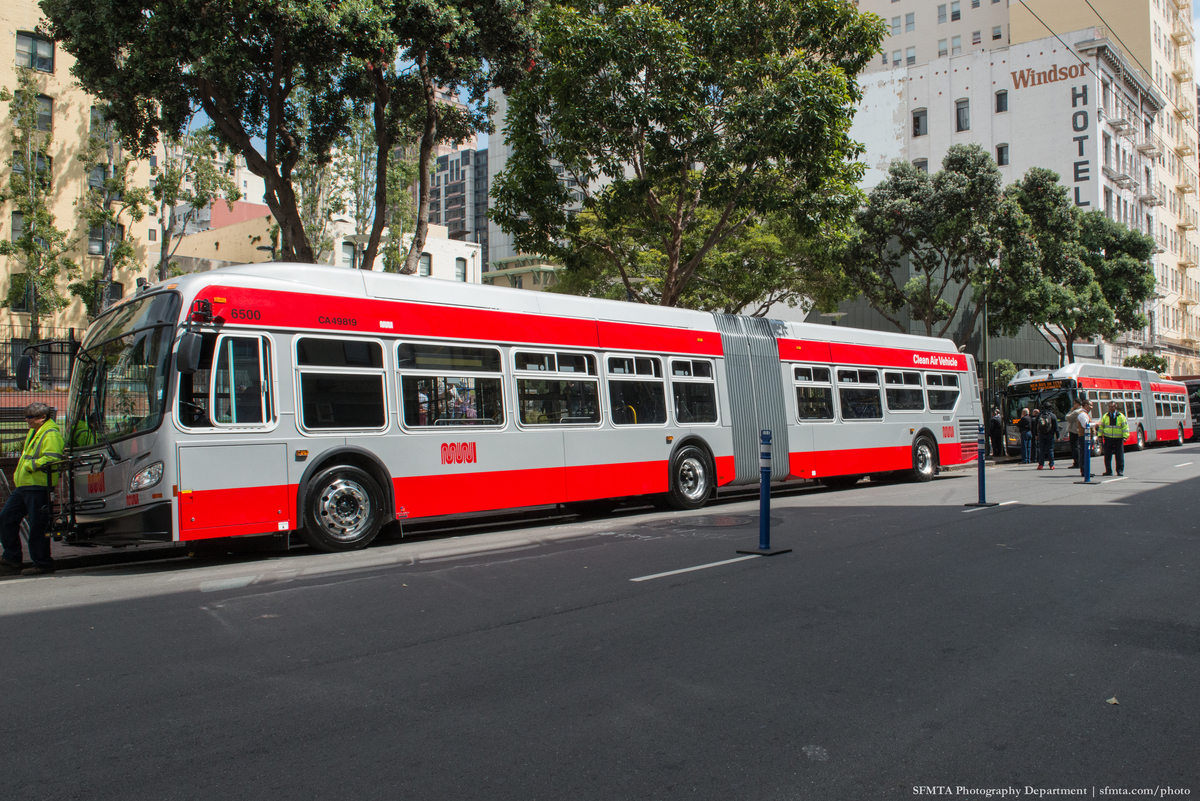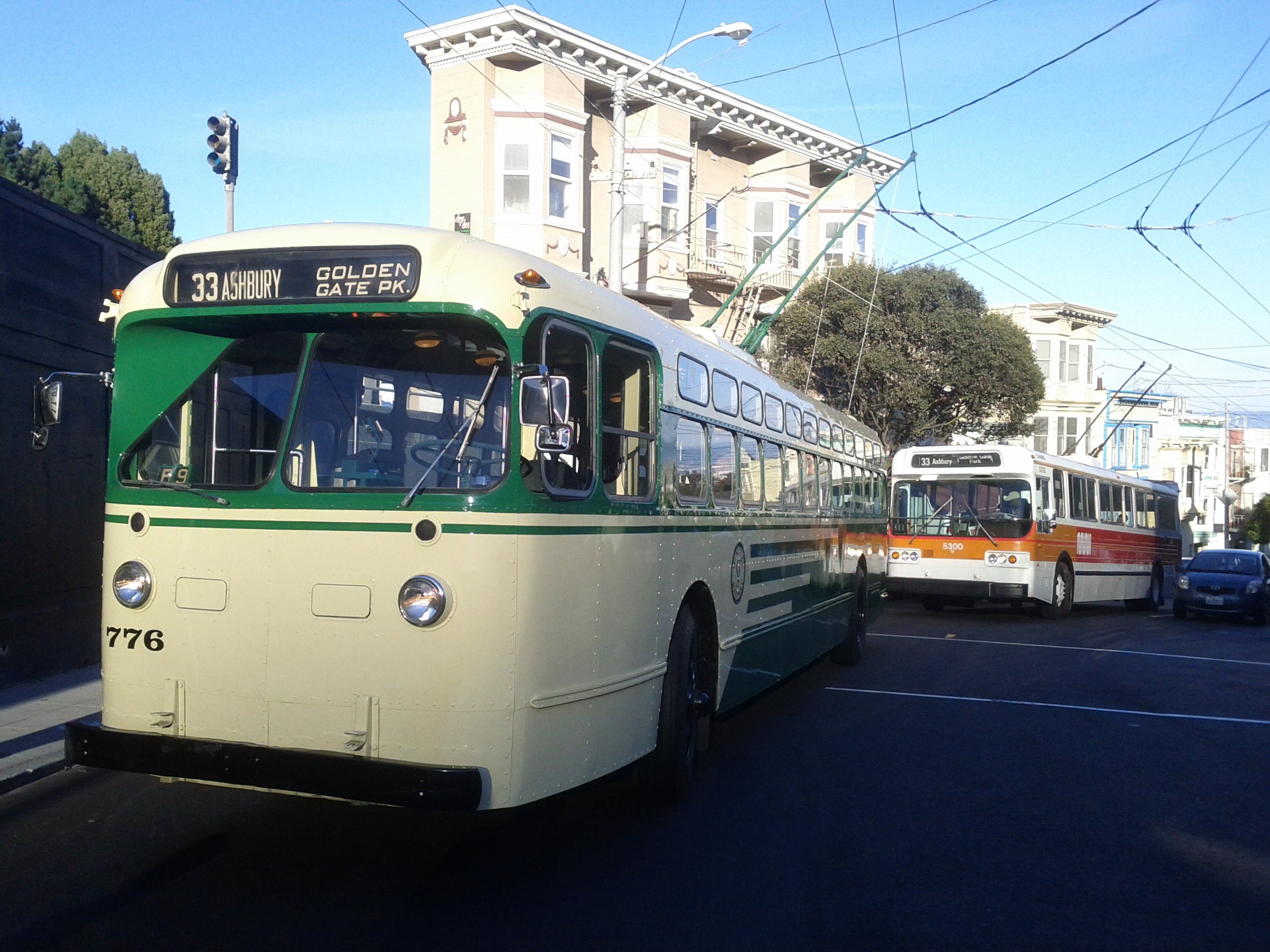Previous - 119. Catching up
Transit
MUNI, the local transit agency for San Francisco, is both amazingly busy (for an American transit system) and amazingly incompetent. I happened to move to SF the summer they replaced their electric trolley buses.
That was 40 years ago. That generation of new buses was replaced eventually and some of those replacement buses are still on the road today...
...along with an even newer generation just coming into service in the past year.
That was 40 years ago. That generation of new buses was replaced eventually and some of those replacement buses are still on the road today...
...along with an even newer generation just coming into service in the past year.
The trolleys got quieter, than louder, and now quieter again. The system for notifying the operator you want to get off, has gotten more elaborate to better serve the disabled, elderly, short, and those standing in the center aisle. Operators gained the ability to adjust their mirrors remotely (a huge time saver when shifts change) and battery backup so they don't get stuck in intersections without power. (Though I do sometimes miss the days when riders had to get out to help push the bus out of an intersection.) They gained the ability to carry wheelchairs and scooter (and now strollers) and the most recent generation has lowered the floor to make this process easier.
What's unique about the newest generation (which also successfully tackled the problem of the truly vile off-gassing of new plastics) is that the new trolley buses, for the first time, visually match the motor coaches. They are identical except for the poles on the roof.
This is a purely cosmetic factor, I was about to say, except that, now I think of it, it isn't at all. I assume that, apart from the motors and engines -- drive trains, if you will -- there is probably a great deal of commonality (in parts, for example) between the electric and hybrid buses which should make maintenance simpler. I have no idea how significant this really is.
What's unique about the newest generation (which also successfully tackled the problem of the truly vile off-gassing of new plastics) is that the new trolley buses, for the first time, visually match the motor coaches. They are identical except for the poles on the roof.
This is a purely cosmetic factor, I was about to say, except that, now I think of it, it isn't at all. I assume that, apart from the motors and engines -- drive trains, if you will -- there is probably a great deal of commonality (in parts, for example) between the electric and hybrid buses which should make maintenance simpler. I have no idea how significant this really is.
I totally lucked out in scheduling my exploratory visit to SF in May of 1976, just before the prior generation of trolley buses were replaced. I got to ride several of those old beasts.
They looked like they were from the '30s or '40s. Their motors where amazingly loud. SF does have a great transit museum collection and they do still have at least one of these old trolleys that I see when they occasionally bring out the old equipment.
They looked like they were from the '30s or '40s. Their motors where amazingly loud. SF does have a great transit museum collection and they do still have at least one of these old trolleys that I see when they occasionally bring out the old equipment.
MUNI, I've heard, is close to introducing a third generation of light-rail trains -- the first generation started service a year or more after I arrived. But BART, the only heavy rail, mass transit operator here, is still using it's original equipment from the early '70s, though they are in the process of introducing replacement trains. I assume this means that heavy rail is both more efficient by carrying many more people on their tracks (with lower labor costs -- more passengers per operator), but also by getting more years of service out of their investment in rolling stock. And yet almost all new service these days seems to be light-rail. It makes no sense to me.
It's time...
...for a political thought experiment. Imagine if you will that the U.S. Supreme Court decides the recent Presidential election is void due to Russian interference and orders a new election to be held in June of this year. People of sanity breath a sigh of relief. Clinton already won the popular vote and it's reasonable to think that she would pick up a significant percentage of Stein supporters (I can't actually imagine Stein deferring to Clinton for this election because politicians are ego maniacs). Also some percentage of the people on the left who couldn't bring themselves to vote for Clinton (a woman) will rethink that decision now and some percentage of people who voted for Trump will be having buyer's remorse. So it's all good, right? No.It's my understanding that more eligible voters failed to vote than voted for either major candidate. Normally these (don't give a fuck) voters aren't a factor, but in my thought experiment I think they might be. First off, I doubt many of them are Clinton supporters. Politically engaged liberals vote. Aside from the already mentioned segment that couldn't bring themselves to vote for a woman, I suspect most of these non-voters are screw-the-system types who don't vote because they assume The System is rigged against them. But not any more. Now they have a screw-the-system President. (I concede that this view explains why my prediction that Trump would win the popular vote was wrong without really being wrong.)
So, in my June election thought experiment I think, as Trump has asserted, he would not only win the Electoral College but the popular vote as well.





No comments:
Post a Comment